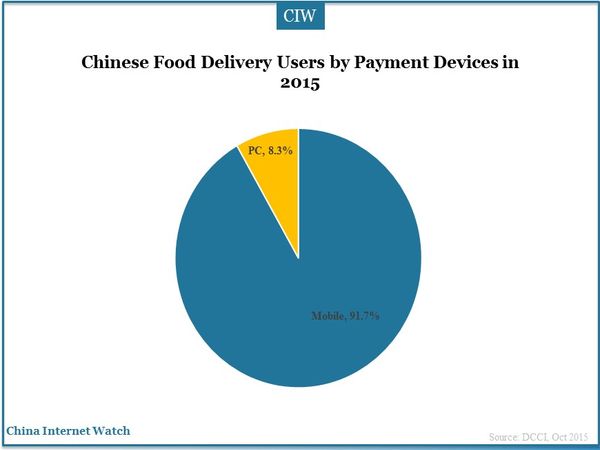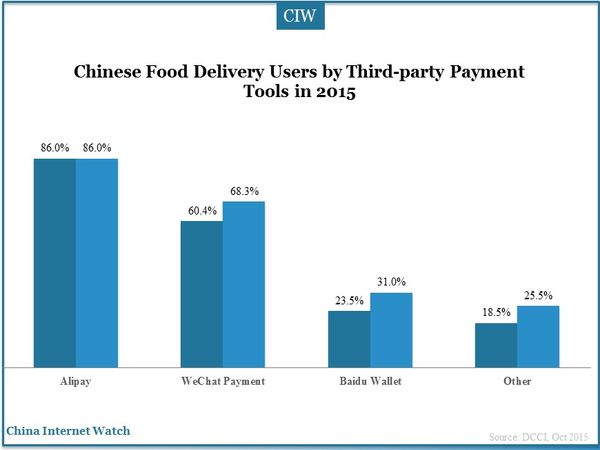
Mobile payment has penetrated into every part of daily life in China such as online shopping, taking a taxi, supermarkets and food delivery in particular. About 70% Chinese internet users have ordered foods in a month and about 70% would pay on mobile according to DCCI. Alipay, WeChat Payment and Baidu Wallet have become the payment apps with the highest usage frequency.

45.8% of female internet users and 47.5% of male users ordered foods in 2014 in China according to iResearch, and more Chinese will use the food delivery service with the ever-improving food delivery market in the future.
Only 26.9% would rather pay cash on delivery and 73.1% users will pay online, among which 91.7% tend to pay on smartphones and 8.3% on the PC end. Alipay, WeChat Payment, and Baidu Wallet lead the mobile payment market becoming most frequently used mobile payment instruments.

Daily active users of WeChat totaled 570 million in China in September 2015 according to Tencent, and WeChat payment users are expected to increase by 7% in the next few months. Baidu Wallet is also promising by connecting with large profitable activities and various services with Baidu such as Baidu Library and Baidu Post Bar. However, Alipay may not attract more users considering its high penetration rate.
Alipay is convenient and simple to operate while Baidu Wallet is more secure and preferential. White-collars prefer Baidu Wallet, and second-tier city Chinese users like Baidu Wallet and Alipay better.
Chinese use mobile payment an average of 2 to 4 times a week that mobile payment has become the most commonly used method except bank cards and cash. DCCI report shows that in 2017, Chinese mobile payment users will be expected to be close to 400 million, representing an increase of about 80% compared with the previous year.
China’s food delivery market achieved over 160 billion yuan (US$25.11 billion), accounting for by 5.8% of the overall catering market, and this proportion will be expected to increase to 9% of over 300 billion yuan (US$49.09) in 2017.